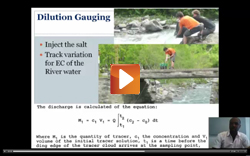Spate irrigation systems are based on floods and related phenomena, which makes them very different from normal irrigation practices. Design considerations that apply to other irrigation systems do not apply to them. This difference, however, has not been appreciated by a number of interventions carried out to modernize or improve existing spate systems. Many of them ended up not improving or worsening their performance.
Some of the factors that make spate systems unique are:
- The large amount of sediments that ride on the flow
- The large amount of trash that comes in with the flood waters
- Scope for abrasion and impact damage
- An intricate system of water rights of various users.
Having evolved over hundreds of years, traditional spate systems take all of these into account. Any intervention to increase their efficiency should be based on these considerations.



















